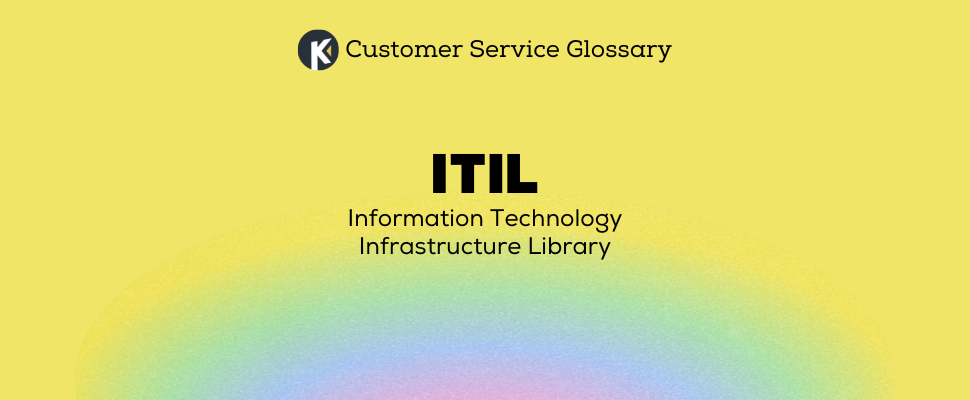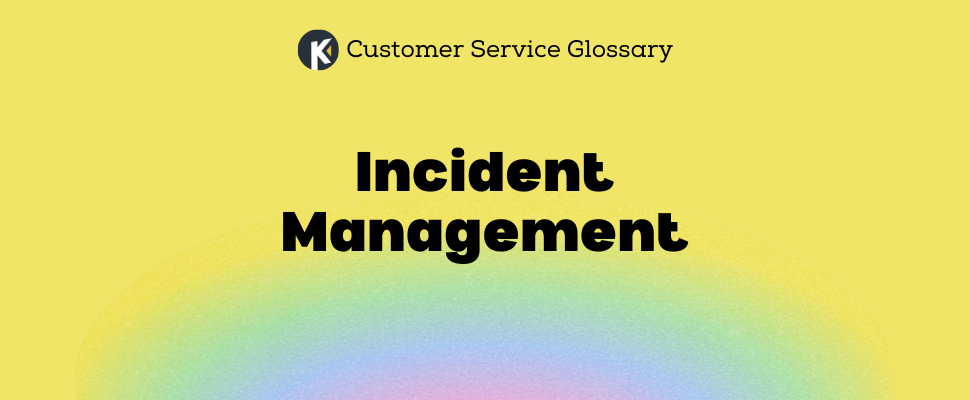
What is ITIL?
In times when IT and business cannot exist without each other, understanding one of the most popular ITSM framework ITIL is key to meeting your business goals. ITIL serves important benefits and comes in many versions. However, not all parts of this framework will be suitable for you—the pivotal part is knowing what processes your.
Almost no business today can function without IT services. It has become a common commodity like food or water. As a result, the IT service must be managed to ensure an excellent user-end experience.
The management of IT-enabled services might take different forms. There are numerous service management frameworks, some of which are more effective than others. ITIL is the most widely used service management framework.
When companies like Walt Disney and Spotify are using the ITIL framework, there must be something great about it. So, what benefits does ITIL bring? And what are the best ways to implement it?
Today we’re uncovering this for you. We’ll walk you through the concept, benefits, and different versions. Lastly, we’ll show you the best practices for an enhanced user-end experience and how you can deliver continual service improvement.
Ready to dive in? Let’s begin!
The Concept of ITIL
ITIL stands for Information Technology Infrastructure Library. It is a framework of IT best practices that have been put in place to ensure that IT services of a particular standard are delivered to businesses. The main idea behind ITIL is that IT organizations are separate entities and their customers are the employees of the business.
The motive behind ITIL is to bring maximum efficiency and set standards for service.
ITIL is a part of a popular paradigm called ITSM (IT Service Management). ITIL frameworks ensure that IT services are delivered to meet the strategic goals of a business and are delivered at the agreed service levels.
ITIL stands for Information Technology Infrastructure Library. In ITIL, IT is a separate entity whose customers are the employees of the business.
The framework of best practices has been derived through the following guiding principles:
- Focus on value and customer experience.
- Iterative progress with recommendations.
- Think broadly and act holistically.
- Keep it straightforward and valuable.
- Optimize and automate.
Service strategy, service design, service transition, service operation, and continuous service improvement are the five stages of the ITIL service lifecycle that are managed using the ITIL framework. It can be said that ITIL is a framework of processes that help you implement the methodology of ITSM.
ITIL vs. ITSM: Key Differences
Although ITSM and ITSM (IT service management) can be used interchangeably, critical distinctions between them are essential to understand. Here are those:
- ITSM is a framework of processes that are used to implement ITSM. In comparison, ITSM is a paradigm that specifies a relationship between an IT organization and the businesses it supports. ITIL goes beyond defining this relationship.
- ITIL’s primary focus is on the IT department. ITSM’s major focus is on the business side of things. The ITIL framework provides direction and best practices for managing the five phases of the IT service lifecycle.
- The objective of ITSM is to constantly measure and improve IT services and infrastructure. The purpose of ITIL is to align its objectives with the business objectives.
Conclusion: ITIL is just one of the standard ITSM (IT service management) frameworks. Everything in the ITSM definition is embodied by ITIL. ITIL defines the “how,” whereas ITSM defines the “what.”
The Benefits of ITIL
So far, you’ve learned about ITIL and what it does for your business. Let’s look at the benefits of incorporating the ITIL framework into your organization.
Better Coordination Between IT and Business
IT organizations and businesses are co-dependent, and to ensure both of them are working towards the same organizational goals, coordination between both is crucial. ITIL plays a significant role in bringing and improving coordination efforts.
One of the guiding principles of ITIL requires IT and businesses to remain aligned toward the same goal. This also results in greater accountability and clarity. ITIL practices help eliminate the scope of miscommunication and conflicts between the two entities.
Improved Client Satisfaction and Service Delivery
Customer service delivery and customer satisfaction will quickly improve due to improved collaboration between the business and IT teams. ITIL’s overarching best practices are inherently created to keep operating systems performing efficiently, allowing customers to have the greatest user experience possible.
Service-level management, one of ITIL’s more focused subdivisions, aids organizations in understanding what their customers have grown to expect from them so they may deliver on those expectations.
Count on Industry Standards
It has been demonstrated that with the ITIL framework, firms can create a strong IT management system, guarantee excellent customer service, and continuously enhance their IT-enabled services. Out of all the other frameworks (like COBIT and MOF), following the tried-and-true ITIL processes is essential for minimizing business risk.
Boost IT asset ROI
When you first consider putting ITIL into practice, you question whether it would be worthwhile to invest in it, and that’s when you start doing the math. Any organization with access to IT resources benefits financially greatly from incorporating the ITIL framework. It enables businesses to get the most out of their IT investments, and its effective workflows result in significant cost reductions.
Different Versions of ITIL
Having evolved over the years, ITIL has four versions today. It started in the UK in the 1980s, and the latest version, ITIL V4, was published in February 2019. Let’s take a detailed look into the versions of ITIL:
ITIL Version 1: Where It All Began
The first ever ITIL version existed in the UK when the government noted that the IT services efficiency benchmark was inadequate. This version had 30 volumes.
The processes covered by this version of ITIL included software distribution and control, change management, and help desk management. It also covers issues like cost management, availability management, contingency planning, and capacity management, which are still very important today.
ITIL Version 2: The First Revision
ITIL version 2 was published in 2001 with the primary objective of making ITIL reliable and accessible. This was done by reducing the thirty volumes to seven service sets.
With this version, the emphasis was on getting rid of duplicate items, improving topic coherence, and adding new IT ideas. Problem management, release management, incident management, financial management of IT assets, security management, and service continuity management were some subjects covered in ITIL V2.
These components became most well-known and are still very relevant today. Additionally, call centers and help desks were introduced in ITIL V2, which compared and discussed three service desk structures: local service desks, central service desks, and virtual service desks.
ITIL Version 3: Service Lifecycle
Published in 2007, ITIL V3 introduced the idea of IT business integration. This was the version that introduced a lifecycle approach and emphasized adopting it. After taking user feedback, this upgrade brought 26 processes divided into 5 volumes.
These 5 volumes focused on:
- Service strategy
- Service Transition
- Service design
- Service operation
- Service improvement
The service transition and service strategy volumes focused on business case development, information security management, and service value definition. The service operation and design volumes introduced new topics such as application management, request fulfillment, and access management.
In 2011, this version saw an update. The primary goal of the 2011 update to the 2007 edition of ITIL was to correct errors and inconsistencies in the text and illustrations throughout the entire suite. The Service Strategy volume had the most content modifications in the 2011 update; minor contextual edits were mainly made to the other volumes.
ITIL Version 4: The Latest Release
ITIL 4 was released in February 2019 by Axelos—a joint venture between the UK government and Capita. The focus of this new version was Agility and modern service delivery. This version was driven by digital transformation and made service delivery faster and more flexible.
This version also talks about four dimensions of service management, these are:
- Organizations and people
- Information and technology
- Partners and suppliers
- Value streams and processes
Another new addition to ITIL 4 was the Service Value System. This system is an operating model for service creation, delivery, and improvement. The core components of ITIL SVS are:
- The value chain for ITIL services
- The ITIL guidelines
- The guiding concepts of ITIL
- Governance
- Constant development
Overall, ITIL 4 continues the process of lifecycle transition while placing a strong emphasis on value generation.
ITIL Best Practices for Enhanced User Experience
By now, it has been established that ITIL exists to integrate businesses and IT departments and ensure that the end user is getting the best services possible. Using the best ITIL practices will help you meet this goal. Here are 5 ITIL best practices to enhance user experience:
Recognize and Communicate ITIL Values
Most businesses fail to see any results with ITIL because they think of it as only a medium of “fixing IT issues.” The potential of ITIL goes much beyond that.
ITIL processes can best suit your company’s needs depending on the goals. By understanding the problems of your business, you can align ITIL objectives with your business objectives. By doing this, you’ll realize the actual value of ITIL.
After recognizing the value, you must communicate it to your organization. Making all departments aware of the benefits of ITIL will bring the best results.
Spot and Manage the Risks
Adopting ITIL in your business environment will come with certain risks, just like any other project. To mitigate any losses, you must spot these risks and find ways to manage them. The risks you could face are:
- Low commitment or buy-in from managers or stakeholders for adoption
- After some time, employees may cease focusing on ITIL procedures and lose interest in them.
- The business unit and other departments oppose ITIL modifications.
- Selecting the ideal provider to support your deployment and deliver ITSM software tools
Even though you cannot avoid 100% of the risks, here are the best risk assessment practices you can follow:
- Understand the root cause of recurring problems and discover ways to minimize them.
- Track each IT asset separately. This will enable you to determine which ones need to be replaced and whether any new assets are required for efficient functioning.
- Check for frequent occurrences or requests. For example, if users often complain about security, you may need new security software.
- Take customer input seriously and consider how you might make service delivery better from their perspective.
Adopting the Right Parts of ITIL
Your organization may not need all parts of ITIL; trying to adopt all ITIL processes may lead to chaos. The ITIL infrastructure has many parts, and you must implement only the ones that align with your business goals.
To keep things simple, start with one or two processes and keep adding more as the team progresses. When it comes to service desk activities, the two common processes are incident management and request fulfillment.
Select the Right ITSM Software
The process of implementing the ITIL best practices framework can be significantly streamlined and made more straightforward by IT service management software solutions. A good ITSM software provider may also provide you with training advice and software support to help you get the most out of the application and adoption of ITIL.
Track Incidents and Requests
Customers and employees who use your IT services must have several ways to get in touch with you if something goes wrong. For instance, they might make use of self-service, live chat, email, and other communication methods.
But how do you store and track incidents in a single system when users can access so many diverse channels? Well, the greatest IT help desk software might be of use here. Whether information is supplied through web forms or emails, your customer service representatives can keep track of every encounter.
Ready to Start Implementing ITIL?
The outcome and benefits of implementing ITIL will depend on how well you understand your organization and adapt the framework accordingly. There is no “One size fits all.” Instead, you should:
- Determine what will (and won’t) work for you.
- Pick strategies that are effective for you.
Delivering a rigid set of procedures without developing an understanding of your goals or developing a culture that respects these principles is the surefire path to failure. Organizations that implement ITIL practices without undertaking this work almost always fail, and they’ll likely attribute that failure to ITIL. Customize ITIL best practices to your business objectives and wow clients with exceptional service.
Join 150+ teams that are sharing inboxes with us
The easiest way to upgrade your shared Gmail account. There’s no credit card is required.






